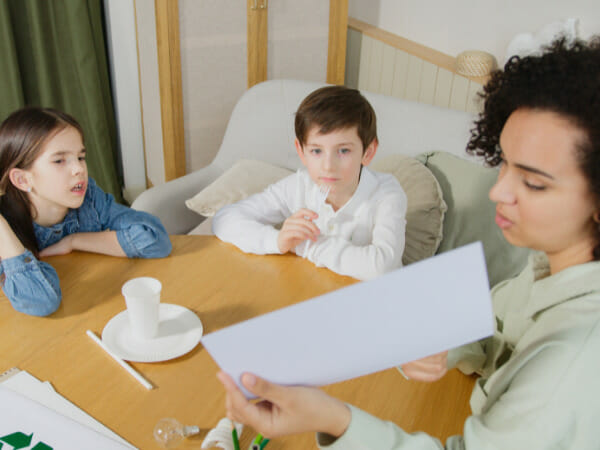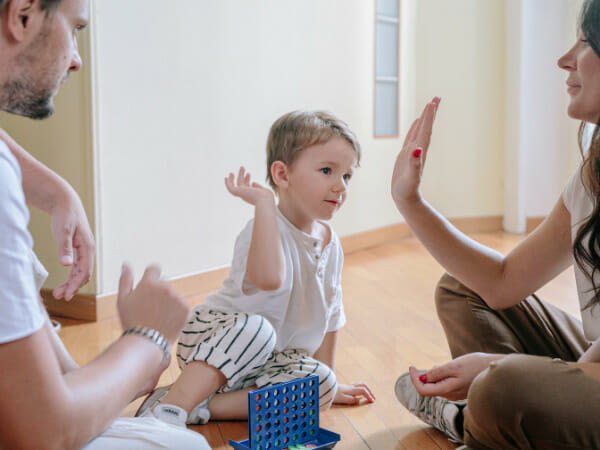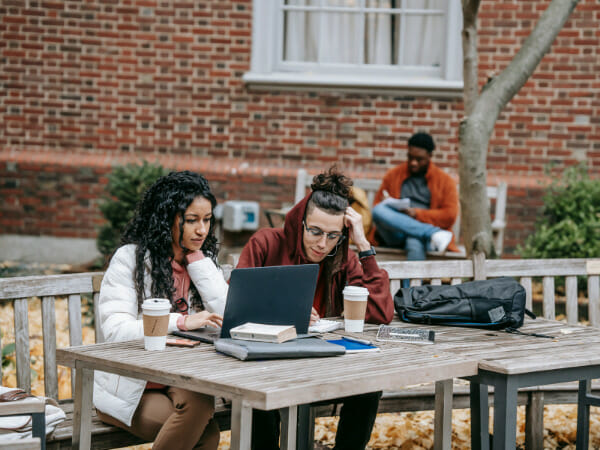Students Are Returning to School After COVID-19 — How to Help
COVID-19 has taken over our lives for the past years. Physical, mental, and emotional stress have taken root within our system. Everybody has to cope, including our children.
With the economy improving and businesses getting better, children are returning to the classroom after COVID-19. The new standard means children return to classroom routines and activities.
How to help children cope is a considerable challenge and a responsibility for parents, school teachers, and caregivers. Children need to understand how these changes can affect them on their return to school.
Returning to the classroom after COVID-19 can be difficult for children who were studying from home

Picture pre-pandemic school times; it’s another carefree school day for youngsters. Void of any warnings, lockdowns occurred. Attending regular school ended. Children had no choice but to stay indoors and participate in online classes.
Fast forward to the present. Returning to the classroom is a mixture of excitement, happiness, and anxiety in a child’s young mind. Being back again in a physical classroom after a long time is a ‘new’ experience for them. They will be free to interact, socialize, and play games with classmates and friends.
While this scenario paints a positive outlook, children do not react well to new changes. Returning to school has its string of issues and concerns.
Parents and teachers play a significant role in this transition. They are authority figures that they trust, and children look up to them. The presence of supportive adults and teachers will help them deal with any changes along the way.
What are the challenges of kids returning to the classroom after COVID-19?
Generally, when kids worry or feel anxious, they want to be close to their parents or caregiver. It is harder for younger children to adapt to a new environment. Much more, be assigned to a new caregiver. They are cautious with unfamiliar faces. Kids need time to adjust, warm up, and trust new people. It will take time for them to cope.
Older school-aged children get worried and dread new changes. They may need extra time for adjustment. When kids are anxious or worried, they want to feel safe with their parents. They need to calm them and make them feel safe and comfortable.
COVID-19 is a serious matter and very much felt around the world. It is essential to remind our kids about the seriousness of the disease. How can they deal with these challenges?
What should be discussed with kids returning to the classroom after COVID-19?
Educate kids on safety and health measures
A child may feel uncomfortable or even anxious about such health rules. But implementing these guidelines is essential.
- Topping the list is proper handwashing. Children need to understand that frequent handwashing with soap is a big step to stop the spread of the virus.
Do a step-by-step guide. Showing how to wash with soap and water for 20 seconds while singing a favorite tune will make it a pleasant experience. Repeating the handwashing activity frequently will further impress on them its importance.
- A face mask is necessary and a reasonable precaution, especially when returning to the classroom. While it is uncomfortable during playtime, wearing masks keeps children safe. Practicing these health protocols will keep them healthy and safe.
- Encourage children to observe social or physical distancing. Use examples when explaining to them. Encourage children not to be too near other people to help prevent the spread of the disease.
- Remind kids to cough and sneeze near the elbows. Show how to do it properly. Children will learn to do the same thing.
- When children are a little anxious, please encourage them to do deep breathing to calm their nerves.
Read More: The Rise Of The COVID XE Variant
Be open to talking to kids about the effects of COVID-19
Kids are curious. They have a lot of questions about COVID-19. Discuss the symptoms clearly for their awareness. Many people have died from this disease, and many are still suffering.
Make sure kids realize that being healthy and safe are essential priorities when returning to the classroom. Ways to stay healthy include eating a well-balanced diet, and regular physical activity help keep a robust immune system.
If they think they are experiencing symptoms, they can approach school teachers ready to help them.
Be updated and share the latest news on COVID-19
Parents should also monitor the news and check out the latest COVID-19 updates. They can share new information with children to keep them prepared and more aware of what is happening. Proper guidance is essential at all times.
Be a good listener and connect with your heart
Children returning to the classroom after COVID-19 is a big deal. School is a haven for them. School means playtime with friends, meeting teachers, and learning together. The absence of regular school life could make your child anxious. Returning to the classroom is going out of their comfort zone. Facing unknown changes will further build anxiety. A child may feel reluctant about it.
As a parent or caregiver, be in listening mode. Allow your child to express their worries and discomfort. Assure them that those feelings are valid. Emphasize the advantages of learning new things together with friends. When a child feels connected, he feels more confident about these recent changes.
While still at home, you can encourage your child to use safe online games to play with other friends. Staying connected online with friends helps strengthen ties.
Have an honest talk about bullying
Children are easy targets for bullying, whether online or in person. In 2019, data from the National Center of Education Statistics reported that 22% of students aged 12-18 are victims of bullying.
Bullying will always be a pressing school issue. Talk to him openly about it and assure him that he is not alone and can count on your support all the time.
What teachers can do to help with the transition
Many early care and educational programs remained open despite the pandemic. However, the majority of families decided to let children stay indoors.
Returning to the classroom after COVID-19 can be a life-changing experience for these youngsters. Dealing with the transition of returning to school is not a walk in the park.
This global crisis has disrupted the normalcy of life and has opened up so many problems. Financial difficulties, failing businesses, and mental and emotional stress have affected thousands of families.
Many children have developed social and behavioral issues. Children suffering from these behavioral conditions may have a more challenging time transitioning.
Students need to have an enriching school experience after COVID-19.
Here are some ways the school can make the transition workable for both teachers and parents
- Schools are developing programs that focus on social and emotional learning.
- Parents and teachers can link in this transition through online connections. Online connections provide an open channel of communication among parents and teachers.
Through this virtual meeting, issues and concerns can be discussed and resolved. Teachers can give extra moral support to parents.
- Schools can showcase classrooms, playgrounds, and other facilities via virtual school tours. In this way, parents can preview the school offerings. Schools can hold face-to-face meetings with parents. The school’s fully vaccinated staff must facilitate meetings.
- Create daily routines for children to prepare them as they return to the classroom after COVID. They need to follow a predictable schedule.
- Schools should provide mental support for teachers who need help dealing with pandemic-related stress.
What parents can do to help
- Check free learning resources that are available on various online platforms.
- Verify free resources like laptops or tablets for student use
- Always communicate with school staff or teachers for new changes or resources
- Reach out to other parents with kids attending the same program. Connecting with other parents is a show of support.
- Parents should be aware of their emotions and mental state. They need to take care of themselves and their needs.
- Learn calming techniques to help support their children.
- Parents can check activities and programs that promote resilience and empowerment.
Notice when your child is having a tough time
After returning to the classroom, getting the hang of school life isn’t always a ray of sunshine. Children may experience ‘back to school blues’ or rough times with the transition. Tough times could mean a lot of things. It could be difficulty coping with school work, dealing with classmates or friends, or a situation at home.
Prepare to see behavioral changes as kids return to the classroom. Parents must be more observant. Be aware of signs and behavioral shifts. Kids display anxiety or stress in many ways. They can experience difficulty in sleeping or get stomach aches and headaches. They may also have a hard time focusing on school work.
Don’t shrug it off. Your child’s state of mind is fragile, and they may need your help
What are the typical signs of trouble?
- Young children are clingy. The other signs are loss of appetite, being afraid of the dark, bedwetting, and thumbsucking.
Pediatric psychologist Vanessa Jensen, PsyD, ABPP, observed that younger children have a more challenging time expressing big emotions.
The psychologist stressed vital points on acceptable and non-acceptable behavior.
Dr. Jensen suggested parents take note of children’s acceptable and not acceptable behavior. A parent or caregiver should encourage a child to be open about his feelings. A child’s feelings need to be validated.
Let him know that it is alright to feel upset, sad, or lonely. When a child is more open about his feelings, a parent will know better how to deal with him.
- Older children may avoid going to school or friends or want to be alone. They can be clingy, have poor concentration, and experience nightmares.
- Teens may experience poor concentration and physical discomfort. They have sleeping difficulty, tend to be argumentative, and have delinquent tendencies.
How to handle and help teens
When dealing with teens, Dr. Jensen recommends giving them some space. She suggests applying the ‘rainbow theory .’The ‘rainbow theory’ is an assurance that you are around should they want to talk.
Teens don’t want to tackle many questions. They want to do things on their own terms. When they take things in stride, teenagers will eventually open up sooner or later.
She also reminds us that dealing with teens requires parents’ time, patience, and assurance. Being pushy to them will not help at all. Teens in the adolescent stage are beginning to learn a new sense of identity. They crave privacy and a sense of control. They want their parents to trust them and respect their privacy.
When recent changes happen in your teen’s life, these changes can be overwhelming and make them uneasy.
Parents should continue showing them that they are approachable. They should show their teen that they can depend on them should they need them. Anxious parents want to make sure that their children are 100% OK. When teens feel they are safe and in a relaxed state, they will reach out to you.
Children cope better with consistent care and guidance
Transitions are not easy for children in this ongoing crisis. COVID-19 has opened their eyes to the harsh realities of life. But it has also helped them become resilient and adaptable at a young age.
For them to transition more effectively, consistency is critical.
It is an extra challenge for parents to deal with the needs of younger children. Be consistent by giving schedules and routines to follow. Schedules and routines make them feel safe. Try to create exciting ways to keep them engaged.
Younger kids have difficulty expressing themselves. Watch out for behavioral changes as they are trying to tell you something. Try your best to resolve these issues.
Conclusion
Parents and caregivers need to go the extra mile to regularly show care and attention to children. Parents need to be more sensitive to their children’s needs as they return to the classroom after COVID-19.
Having an understanding heart and patience are required at times.
Adults need to be responsive and regularly connect with them. When they feel nurtured and connected, children feel safe and empowered. When children feel protected in a supportive environment such as the home or school, they will be able to cope better with change.





